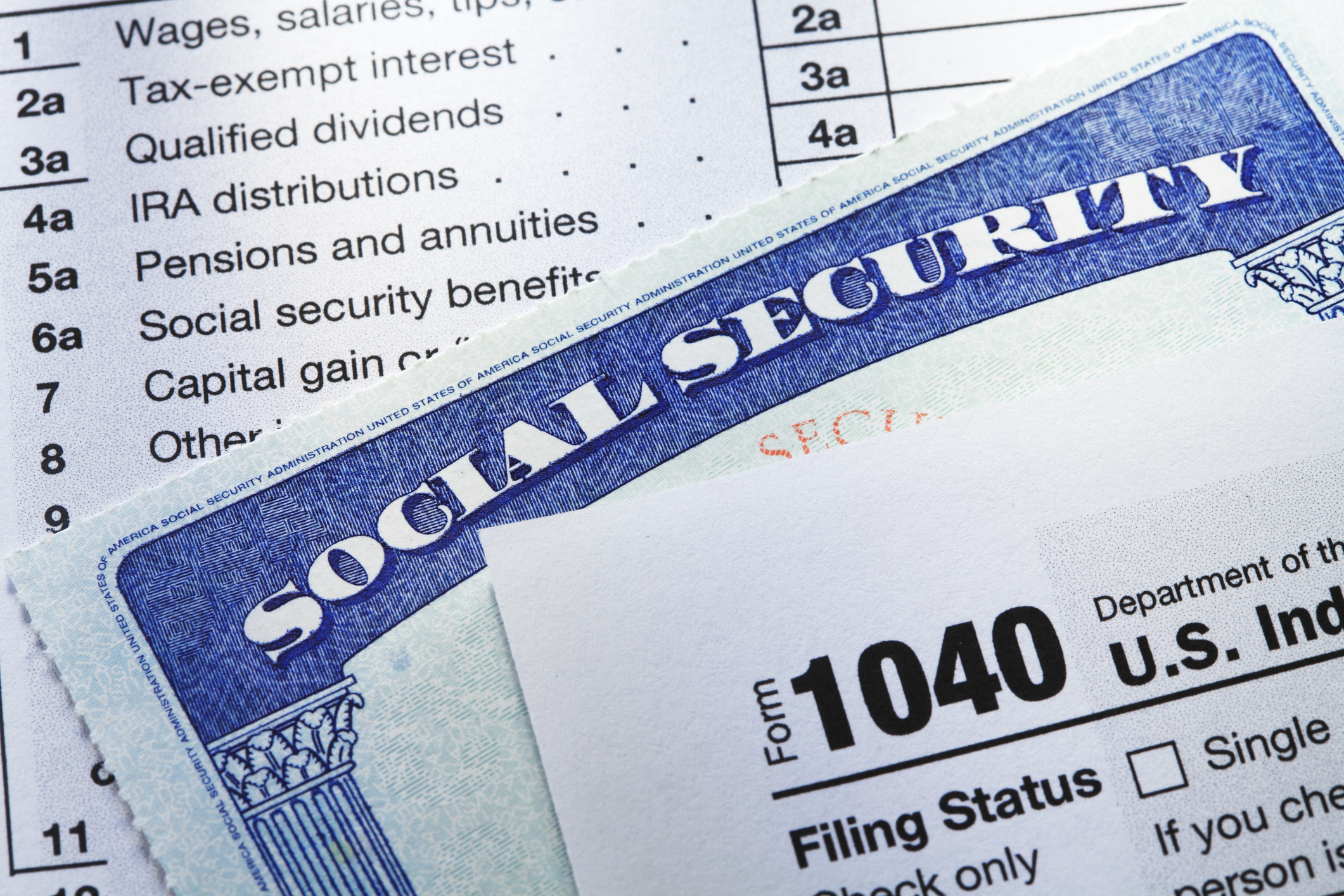Why You Should Expect a Lower Social Security COLA for 2025
A decline in the inflation rate is likely to bring down the cost-of-living adjustment to Social Security benefits.


Inflation presents a challenge for most American households, but it can be particularly pernicious for retirees who live on a fixed income. For that reason, retirees who have signed up for Social Security benefits closely monitor the annual cost-of- living adjustment in their payments. Forty percent of seniors rely on Social Security for more than half of their monthly income, and 14% rely on it for more than 90% of their income, according to an analysis by AARP.
Those seniors may be disappointed by the increase in their benefits in 2025. If the inflation rate remains on track, the annual adjustment will be less than 3%, the smallest increase since 2021. The Kiplinger Letter forecasts that the 2025 COLA will be 2.6%, down from 3.2% in 2024.
The 2025 COLA will be based on the Consumer Price Index for Urban Wage Earners and Clerical Workers in the third quarter of 2024. So if inflation rises before October, the COLA will be adjusted upward — or if inflation declines, the COLA will be reduced. However, The Kiplinger Letter forecasts that the inflation rate for the rest of the year is unlikely to fall below recent levels.

Sign up for Kiplinger’s Free E-Newsletters
Profit and prosper with the best of expert advice on investing, taxes, retirement, personal finance and more - straight to your e-mail.
Profit and prosper with the best of expert advice - straight to your e-mail.
What the 2025 COLA will mean for retirees
The estimated 2025 COLA would still be larger than the average COLA before the pandemic’s effects ignited the inflation rate. Still, the COLA would fall short of the rate of inflation for retirees’ actual costs, advocates for seniors say.
Seniors who own their homes have been insulated from steep increases in monthly rents, but older homeowners still have to pay property taxes and homeowners insurance, both of which have also risen sharply in recent years. Housing costs also include electric bills, which spiked over the summer because of record-setting heat, says Mary Johnson, a Social Security and Medicare analyst, who forecasts a Social Security COLA of 2.7%.
Health care costs have also risen faster than the rate of inflation and account for a disproportionate percentage of retirees’ overall costs, Johnson says. Retired Americans spend an average of 14% of their monthly income on prescription drugs and other out-of-pocket medical expenses, according to a survey of retirees by Schroders, a wealth management firm.
Inflation in health care costs increases Medicare Part B premiums, which cover doctor’s visits and other types of outpatient medical care. Most retirees have their Part B premiums automatically deducted from their Social Security payments, so an increase in premiums can diminish the boost from the COLA. In its annual report released in March, Medicare’s board of trustees predicted that standard Medicare Part B premiums will increase about 5.8% in 2025, to $185 a month, up from $174.80 a month in 2024. The Centers for Medicare & Medicaid Services (CMS) will announce Medicare Part B premiums for 2025 this fall.
Increases in Part B premiums reverberate a bit more for a subset of seniors who are subject to the Medicare high-income surcharge, also known as the income-related monthly adjustment amount (IRMAA). The surcharge is based on beneficiaries’ modified adjusted gross income from two years earlier, so the 2025 surcharge will be based on seniors’ MAGI in 2023 (MAGI is a taxpayer’s adjusted gross income with a handful of deductions added back, including student loan interest, tax-exempt Social Security payments and excluded interest on savings bonds).
CMS hasn’t announced the amount of the 2025 surcharge yet, but seniors who are subject to it are expected to pay Part B premiums ranging from $259 to $628.90, according to an analysis by Kiplinger.com.
Prices for prescription drugs also increase at a faster rate than inflation, Johnson says, although seniors with high drug costs will get some relief in 2025: Out-of-pocket costs for prescription drugs will be capped at $2,000 a year. The cap was included in the 2022 Inflation Reduction Act. The law also gives Medicare the ability to negotiate prices for some high-cost drugs, but that won’t have an appreciable effect on drug prices next year, Johnson says.
Plan ahead with an HSA
One of the most effective ways to prepare for health care costs in retirement is to contribute to a health savings account. Contributions to an HSA are pretax if you have an account through your employer (or tax-deductible if your plan is not from an employer), the money grows tax-deferred through the years, and you can withdraw it tax-free for eligible medical expenses at any time in the future.
Once you enroll in Medicare, you can no longer contribute to an HSA, but you can use money in your account to pay premiums for Medicare Part B, Part D prescription-drug coverage, or a Medicare Advantage plan.
If you have a health insurance policy with a deductible of at least $1,600 for single coverage or $3,200 for family coverage, there’s still time to contribute to an HSA for 2024. Maximum contributions for 2024 are $4,150 for self-only coverage and $8,300 for family coverage; those maximums increase by $1,000 if you’re 55 or older. In 2025, you can contribute up to $4,300 for self-only coverage if you have a plan with a deductible of at least $1,650; $8,550 for family coverage if you have a deductible of at least $3,300.
Note: This item first appeared in Kiplinger Personal Finance Magazine, a monthly, trustworthy source of advice and guidance. Subscribe to help you make more money and keep more of the money you make here.
Related Content
Get Kiplinger Today newsletter — free
Profit and prosper with the best of Kiplinger's advice on investing, taxes, retirement, personal finance and much more. Delivered daily. Enter your email in the box and click Sign Me Up.

Block joined Kiplinger in June 2012 from USA Today, where she was a reporter and personal finance columnist for more than 15 years. Prior to that, she worked for the Akron Beacon-Journal and Dow Jones Newswires. In 1993, she was a Knight-Bagehot fellow in economics and business journalism at the Columbia University Graduate School of Journalism. She has a BA in communications from Bethany College in Bethany, W.Va.
-
 6 Stunning Waterfront Homes for Sale Around the US
6 Stunning Waterfront Homes for Sale Around the USFrom private peninsulas to lakes, bayous and beyond, Kiplinger's "Listed" series brings you another selection of dream homes for sale on the waterfront.
By Charlotte Gorbold Published
-
 Six Reasons to Disinherit Someone and How to Do It
Six Reasons to Disinherit Someone and How to Do ItWhether you're navigating a second marriage, dealing with an estranged relative or leaving your assets to charity, there are reasons to disinherit someone. Here's how.
By Donna LeValley Published
-
 Six Reasons to Disinherit Someone and How to Do It
Six Reasons to Disinherit Someone and How to Do ItWhether you're navigating a second marriage, dealing with an estranged relative or leaving your assets to charity, there are reasons to disinherit someone. Here's how.
By Donna LeValley Published
-
 Should You Still Wait Until 70 to Claim Social Security?
Should You Still Wait Until 70 to Claim Social Security?Delaying Social Security until age 70 will increase your benefits. But with shortages ahead, and talk of cuts, is there a case for claiming sooner?
By Evan T. Beach, CFP®, AWMA® Published
-
 Retirement Planning for Couples: How to Plan to Be So Happy Together
Retirement Planning for Couples: How to Plan to Be So Happy TogetherPlanning for retirement as a couple is a team sport that takes open communication, thoughtful planning and a solid financial strategy.
By Andrew Rosen, CFP®, CEP Published
-
 Market Turmoil: What History Tells Us About Current Volatility
Market Turmoil: What History Tells Us About Current VolatilityThis up-and-down uncertainty is nerve-racking, but a look back at previous downturns shows that the markets are resilient. Here's how to ride out the turmoil.
By Michael Aloi, CFP® Published
-
 How to Get Apple TV Plus for just $2.99
How to Get Apple TV Plus for just $2.99For a limited time, you can get three months of Apple TV Plus for just $2.99 per month. Here’s how to get the deal.
By Rachael Green Published
-
 Don’t Panic About the “Retail Blackout” – See Which Stores Are Closing (and Which Aren’t) for Easter 2025
Don’t Panic About the “Retail Blackout” – See Which Stores Are Closing (and Which Aren’t) for Easter 2025Dozens of major retailers are planning to close their doors on April 20. Find out which of your go-to stores are on the list.
By Rachael Green Published
-
 What 401(k) Savers Near Retirement Can Do Amid Market Volatility
What 401(k) Savers Near Retirement Can Do Amid Market VolatilityWhether retirement is years away, a year or two out, or in the rearview mirror, here's how to handle uncertainty in your 401(k).
By Donna Fuscaldo Published
-
 Could You Retire at 59½? Five Considerations
Could You Retire at 59½? Five ConsiderationsWhile some people think they should wait until they're 65 or older to retire, retiring at 59½ could be one of the best decisions for your quality of life.
By Joe F. Schmitz Jr., CFP®, ChFC® Published